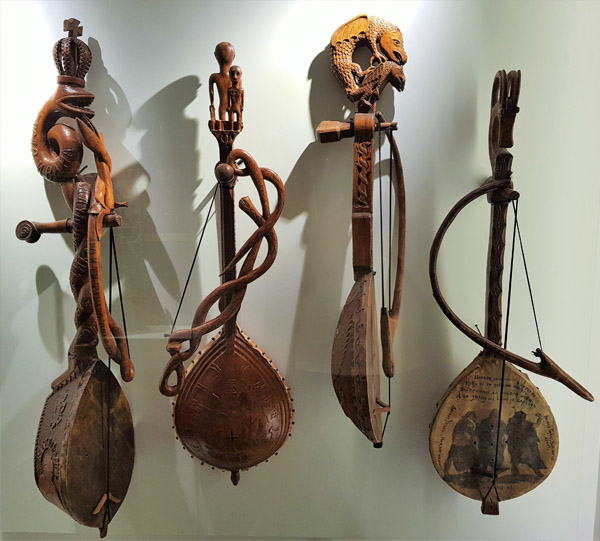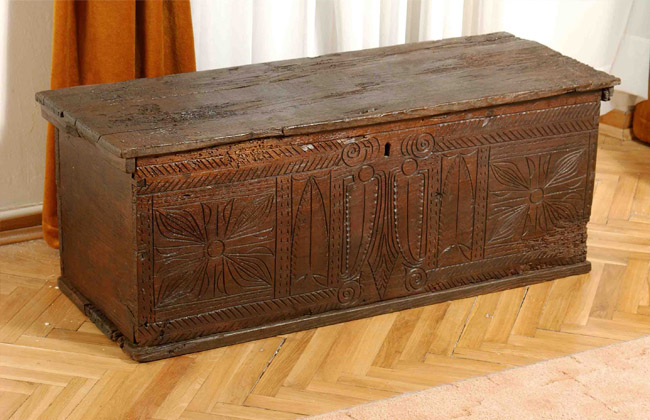Folk art of the Dinarides
 The folk art created in the rural areas of the Dinaric Mountains is the product of the mutual interpenetration and influence of numerous factors, nature, economy, lifestyle, and origin of the population. These include artistic creations of useful, decorative and cult objects, which were created by self-taught artists, villagers, first of all, for themselves and their families, and then for sale or exchange. Folk creations bear the characteristics of the area in which they were created and are characterised by a variety of shapes, figures, colour effects and ornamental decoration.
The folk art created in the rural areas of the Dinaric Mountains is the product of the mutual interpenetration and influence of numerous factors, nature, economy, lifestyle, and origin of the population. These include artistic creations of useful, decorative and cult objects, which were created by self-taught artists, villagers, first of all, for themselves and their families, and then for sale or exchange. Folk creations bear the characteristics of the area in which they were created and are characterised by a variety of shapes, figures, colour effects and ornamental decoration.
In the villages closer to the Dinaric system mountain chain, the creations of folk art were less influenced by the styles of other cultures. Mostly inherited, traditional forms were expressed there. The simplest geometric motifs are found on a considerable number of objects made of wood, textiles, and clay. There was a lot of basket weaving, a skill that men were interested in. They made many objects from wicker, reed and straw, of various purposes and shapes.
The production and decoration of wooden objects was developed in forested areas. This was mainly done by shepherds. Shallowly incised, scored and hollowed-out geometric motifs were found on almost all useful and decorative objects in rural households. These are shepherd’s glasses, sticks, razors, pipes, flutes, distaffs, spindles, boxes, wooden spoons, salt shakers, shelves, bench backs, ox yokes. Incised decorative motifs on distaffs and numerous small items from the Dinaric region show a high quality of processing. The most common motifs are lines, straight slashes and zigzags in different combinations, rosettes, simple and concentric circles.
Among the crafts of skilled self-taught village artists, the figurativeness on the neck of the single-stringed fiddle (gusle), from the area where this instrument was used, should be highlighted. Human figures, those of animals (birds, chamois, snakes) are sometimes very expressive and possess certain artistic values. The skills of village artisans can also be seen in the creation and carvings of various types of table chairs, the honorary chairs of the village household. One-stringed fiddles and table chairs were characteristic items for the regions of Montenegro, Herzegovina and Western Serbia.
In the past, there were processed wool, cotton, hemp, linen, raw materials that women usually produced themselves, and wove and knitted numerous useful and decorative items from the obtained yarns for everyday and festive occasions.
Wool was rolled from the felted wool and sleeping mats and other items were made according to their work technique. Blankets, cloth covers, precious wool covers, water-rolled soft woolen cover, upper woolen dresses, fringed winter cloaks, woven bags, belts, were decorated with geometric ornamentation, with multi-coloured stripes, with rhombus, square and triangle motifs. Wool blankets were made of yarn in natural shades of greyish, white and dark colours. Sometimes they were dyed red, black or in several shades of colour. The water-rolled soft woollen cover was a characteristic product of local weaving, especially in Lika.
Elements specific to the folk art of the Dinaric area can also be seen in the decorations on the national costumes, in the arrangement and type of embroidery on shirts and scarves, in the motifs of woven aprons, in the hemmed edges and seams of clothes, strips of cloth, etc.
The canvas was embroidered with threads of wool, linen, cotton, or silk, in various colours and thread thickness. Simple work techniques and geometric motifs were used to embroider scarves, shirt decorations, and small linen textiles.
 The folk art creations also featured floral motifs, flower vines, tulips, roses, bouquets of flowers, as well as zoomorphic ornaments, various types of birds and animals, vivid colours, especially on woven objects, rugs, aprons, bags, towels and parts of women’s clothing and men’s national costumes, and also on painted home furniture, chests, wardrobes, beds, sideboards, cradles, toys, etc.
The folk art creations also featured floral motifs, flower vines, tulips, roses, bouquets of flowers, as well as zoomorphic ornaments, various types of birds and animals, vivid colours, especially on woven objects, rugs, aprons, bags, towels and parts of women’s clothing and men’s national costumes, and also on painted home furniture, chests, wardrobes, beds, sideboards, cradles, toys, etc.
Among the oldest and most vital traditional items of furniture, in these areas, there was a chest for storing food, clothes, bedding, handicrafts, jewellery, money and other valuables. The specificity of the chest is characterized by the number of names and the way it was made (skrinja, baul, baun, bajuo (all with Italian etymology), sehara, sanduk (both with Arabian etymology), trunk, suitcase…). Simple rural chests with and without decorations and chests painted and carved with craftsmanship were in use.
Rural type chests were made by self-taught craftsmen in their homes, using household tools, such as saw, axe, drill, chisel, adze and knife. They also made ordinary, simple boxes for storing food, grains, flour, dried meat and various items needed in the countryside.
For storing clothes, they made chests of a rougher design, decorated with the technique of cutting and shallow carving, rarely woodcarving. Ornaments are different, usually geometric, lines, triangles, quadrilaterals and circles. These motifs are sometimes painted with vivid colours.
Artisan chests are more finely made, and are characterized by two types, the so-called Skadar chests with painted decoration, domesticated in the craftsmanship of Skadar (Albania) and carved coastal chests, made in fine wood carving (Kotor Bay and Dalmatia). They were produced by specialized master chest makers. Painted chests are recognisable by the painting of three sides with a floral ornament with calm or intense colours, on which the inner side of the lid is also painted. In the chests of the coastal type, fine wood carving is represented on the entire surface of the front side, where floral and figural motifs alternate.
The diversity of the folk art of the Dinarides is complemented by the products of village artisans, especially potters, who made clay cauldrons, bowls, jugs and other pottery vessels of various types and shapes, mainly for kitchen use, unglazed or darkened in a special way, without decoration or with sparsely ornamented geometric motifs.
Among the forged decorative objects, women’s jewellery and some elements of men’s Dinaric costumes stand out, e.g. decorative buttons on a national costume, belts, decorations on weapons, as well as various boxes, containers, vessels, amulets, made by master blacksmiths, silversmiths, from forged silver, lead and copper sheets, using the technique of casting, stamping, engraving, chiselling and filigree. (Bosnia and Herzegovina, Western Serbia, Croatia, Albania).
Among various utility and decorative objects of fine folk art, ritual artistic creations were also significantly represented in the areas of the Dinaric system (various forms of masks, Easter eggs, ritual pastries, cult figurines, sacral monuments and tombstones).
Due to changes in the socio-economic structure and the rapid process of urbanisation of rural areas, the sustainability of folk art is being extinguished, whereby both traditional skills and many handicrafts of village craftsmanship are gradually being lost and starting to slowly disappear.
